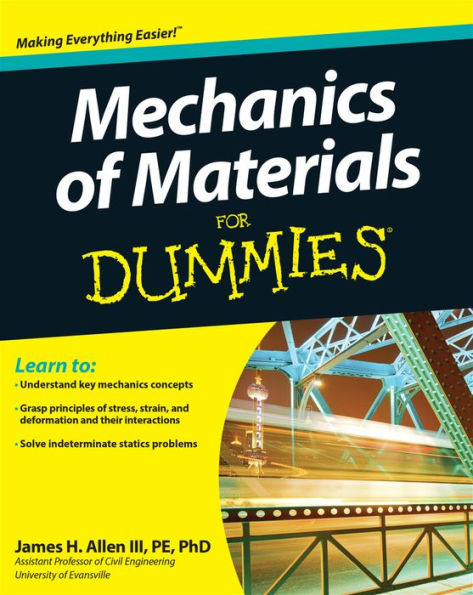Table of Contents
Introduction 1
Part I: Setting the Stage for Mechanics of Materials 7
Chapter 1: Predicting Behavior with Mechanics of Materials 9
Chapter 2: Reviewing Mathematics and Units Used in Mechanics of Materials 15
Chapter 3: Brushing Up on Statics Basics 25
Chapter 4: Calculating Properties of Geometric Areas 41
Chapter 5: Computing Moments of Area and Other Inertia Calculations 55
Part II: Analyzing Stress 83
Chapter 6: Remain Calm, It’s Only Stress! 85
Chapter 7: More than Meets the Eye: Transforming Stresses 99
Chapter 8: Lining Up Stress Along Axial Axes 131
Chapter 9: Bending Stress Is Only Normal: Analyzing Bending Members 149
Chapter 10: Shear Madness: Surveying Shear Stress 161
Chapter 11: Twisting the Night Away with Torsion 177
Part III: Investigating Strain 189
Chapter 12: Don’t Strain Yourself: Exploring Strain and Deformation 191
Chapter 13: Applying Transformation Concepts to Strain 201
Chapter 14: Correlating Stresses and Strains to Understand Deformation 215
Part IV: Applying Stress and Strain 233
Chapter 15: Calculating Combined Stresses 235
Chapter 16: When Push Comes to Shove: Dealing with Deformations 251
Chapter 17: Showing Determination When Dealing with Indeterminate Structures 273
Chapter 18: Buckling Up for Compression Members 301
Chapter 19: Designing for Required Section Properties 313
Chapter 20: Introducing Energy Methods 331
Part V: The Part of Tens 343
Chapter 21: Ten Mechanics of Materials Pitfalls to Avoid 345
Chapter 22: Ten Tips to Solving Mechanics of Materials Problems 349
Index 355




